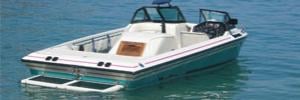
UKandH sounds like he knows what he's talking about. But what he's describing is going to require you to write a blank-check to your machine shop. These boats are not high-performance machines and don't need to be blueprinted and balanced to the extent that he's describing. Is it better? Absolutely. Will it result in more power and smoother operation? Yes. Will you ever get your money back out of that type of build when you sell? Never, never, never.
If you can buy a longblock with a warranty for $1k, I wouldn't think twice. You'll have twice that into rebuilding yours with mild upgrades (and the minimum in machine work.)
Former owner of a 1987 Supra Saltare. Current owner of a Malibu 23LSV.


 Reply With Quote
Reply With Quote


 It will take a complete manifold redesign or a bit of innovative modification (something i am currently looking at as a little design project at home)
It will take a complete manifold redesign or a bit of innovative modification (something i am currently looking at as a little design project at home) 
